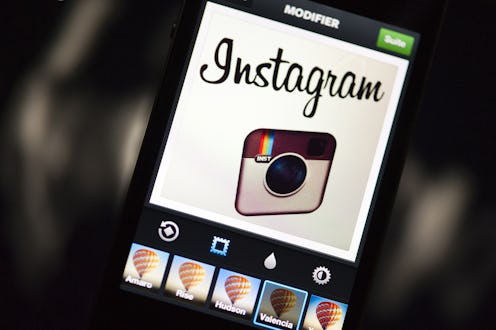If you're anything like me, you really only have one criterion for choosing an Instagram filter: What looks the prettiest. But some new data shows there's a lot more strategy you can put into this decision in order to pick the best photo filter for your needs. Georgia Tech and Yahoo Labs just surveyed Flickr users about their use of filters and analyzed data from 7.6 million Flickr photos (more than half of which were cross-posted to Instagram), and the results are in: If you want people to see and comment on your photos, filters are the way to go (sorry, #nofilter fans).
Social media marketers have long been analyzing data to optimize their engagement on Instagram, and the concept that filters are better than #nofilter is not new. However, the paper presenting these new results, titled "Why We Filter Our Photos and How It Impacts Engagement," also presented some surprising statistics on the filters that drive the most and least engagement.
The authors of the study examined the effects of five different filtering techniques — increasing warmth, saturation, contrast, exposure, and age — on how many views and comments the photos received. Here's what they had to say about the different visual effects, which Yahoo Labs researcher David Shamma applied to the same photo on Flickr. Not all these effects correspond directly to Instagram filters, but there are a few for each that get the job done.
1. Warmth
Instagram filters: Iguana, Sepia, Mayfair, Rise, Toaster
Engagement: Photos with warm filters get the most comments of all the filters and a higher-than-average view rate, so these are winning choices if you have dreams of Instagram-celebrity status.
2. Saturation
Instagram filters: X-Pro II, Hefe, X-Pro II, Lo-Fi
Engagement: Saturation was the only characteristic correlated negatively with views. Lord knows, why, but the Flickr user interviewed in the study who likes to "play around with the saturation to get all the bright colors" may be misguided.
3. Contrast
Instagram filters: Nashville, Inkwell
Engagement: Adding contrast increases both views and comments, so lighten those lights and darken those darks to make your photos pop.
4. Exposure
Instagram filters: Toaster (shown above), Amaro, Sutro
Engagement: While warmth took the cake with comments, high-exposure photos had the most views of all the filters, as well as more comments. So, if you want to get your Instagram page more exposure, you can start by literally increasing your photos' exposure.
5. Age
Instagram filters: Lord Kelvin (shown above), Sepia, 1977, Inkwell
Engagement: Aging was the only effect correlated negatively with comments — because sadly, some things become less relevant with age.
